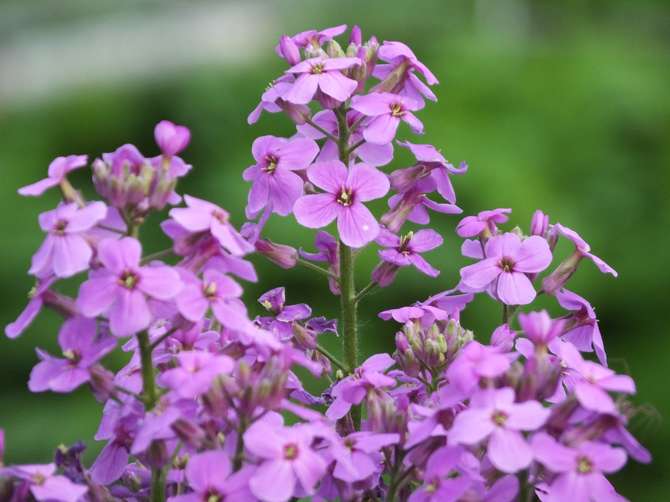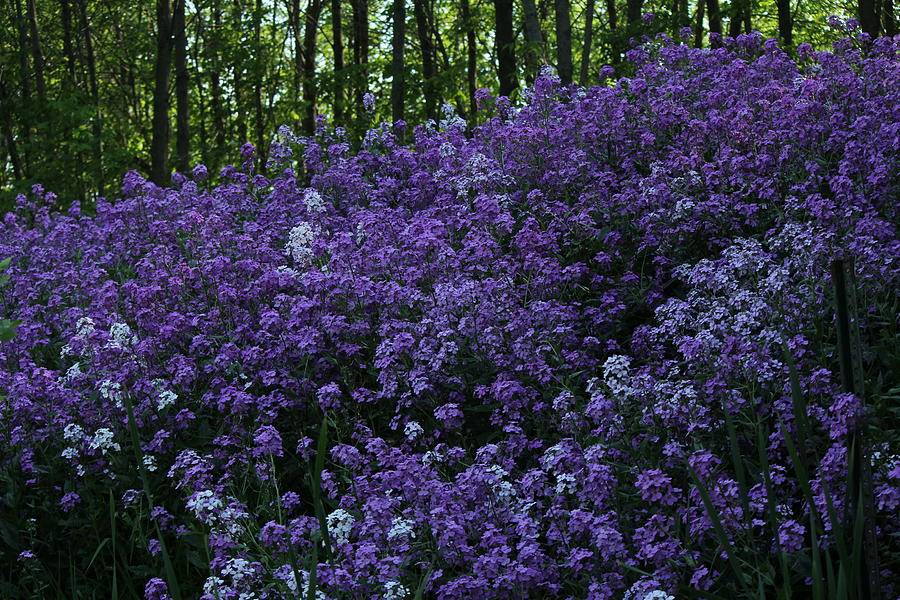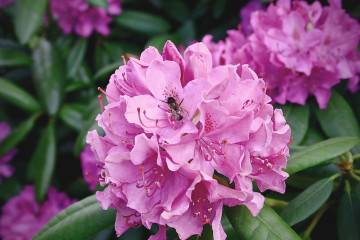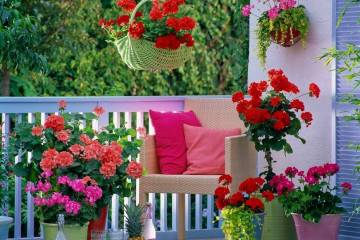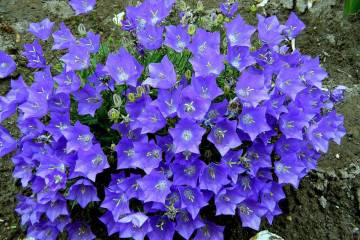Matron's party (Hesperis matronalis)
Content:
The matron's evening party belongs to the category of perennial or biennial herbaceous plants of the Cruciferous family. The nocturnal is often called the night violet and hesperis. The main difference between the plant lies in the pronounced aroma that fills the garden area after sunset.
Description and history
The stems of the night violet reach a height of 100-110 cm. In the upper part, they branch out. The tops of the green leaf plates are pointed. Large inflorescences resemble bunches. During the flowering period, the bushes look like lilacs. Flowers arranged crosswise are painted in a lavender palette. The seeds of the plant ripen in the pods after the flowering period is over. The seeds, colored brown, are quite small in size.
Description varieties bred on the basis of pure Hesperis matronalis
Below are the best varieties of night violets that have been bred by breeders based on Hesperis matronalis.
Crimson
The height of the stems reaches 80 cm. The formation of flowers is delayed for 2 years. In the first 12 months, a dense rosette of green leaf plates forms. In the second year, the stem branches out at the top. Flowers, painted in a delicate lilac shade, are located on tall peduncles.
Siberian evening party
A biennial culture grows up to 130 cm in length. Stems, leaf plates and pedicels are covered with branched hairs. The shape of the leaf plates is oval, the flowers are double. Pedicels are slightly protruding. The petals can be white or lilac-pink. The flowering of the Siberian variety begins in mid-June.
Night beauty
The diameter of the night beauty's double flowers exceeds 20 mm. The variety should be planted in well-lit areas. The oval-lanceolate leaf plates are slightly pointed at the top. The height of the erect stem is in the range of 85-90 cm. It is covered along its entire length with soft silky hairs.
Growing from seeds
Vechernitsa is a plant that can be grown in seedlings. Seed material is sown in mid-spring.
- Prepared containers are filled with disinfected soil.
- The seeds are evenly distributed over the surface of the earth.
- A small layer of humus mixed with peat is poured over the seeds.
- The sowing surface is compacted (slightly). The soil is moistened with a spray bottle.
- The containers are covered with a piece of glass. In a few weeks the first nocturnal sprouts will appear. While waiting for sprouts, it is necessary to systematically moisten the soil and remove the glass from the container for ventilation.
- From the moment the seedlings appear, the glass can be removed completely. The soil in containers should be loosened systematically.
Vechernitsa is a flower that must be planted in well-lit areas. The soil for planting should be moderately moist and loose. In loamy soil, it is necessary to apply mineral fertilizer and organic fertilizing before planting.
Planting in a seedless way
The varieties bred on the basis of Hesperis Matronalis can also be propagated without seedlings. For this purpose, the seeds are sown at the end of April in open ground. After 14-17 days, the first shoots will appear on the flowerbed. Before planting, you should loosen the soil in the flower garden to saturate it with oxygen. Seeds are planted in the formed grooves. It is recommended to sprinkle them with a small layer of fertile soil. The soil at the site of the planting work is moistened with a spray bottle.
Other breeding methods
You can propagate a night violet not only by seed, but also:
- dividing the bush;
- by cuttings.
The method of dividing the bush can be used both in the spring and in the fall. Bushes extracted from the ground are divided into 2-3 parts with a sharp shovel. The cuts are processed with a small amount of crushed charcoal. Delenki can be planted in pre-prepared holes. Near the planted cuttings, the soil is mulched with a layer of sawdust.
For grafting, it is recommended to cut the stems from adult night violet bushes with two internodes. Places of cuts should be treated with a growth stimulant and planted in a soil mixture containing:
- fertile soil;
- peat;
- sand.
Care features
Caring for the evening party of the matron hesperis is quite simple. Below are the main recommendations regarding the main activities that are important to follow when growing a crop.
- Vechornitsa night needs systematic loosening and moistening of the soil. Do not allow the soil to dry out.
- Every 4 weeks it is necessary to apply top dressing to the soil. For this purpose, experts recommend using complex mineral fertilizers. Also in the spring, it is advisable to add a small amount of wood ash to the soil, which will compensate for the deficiency of useful elements in the earth and increase the alkaline reaction.
- Vechinitsa flowers need good lighting. That is why it is worth choosing sunny areas in the garden for planting seedlings. On especially hot days, you can shade the decorative culture with a special garden net.
- The moisture level has no effect on the growth of hesperis.
- In the classification of plants with poisonous properties, the good winter hardiness of the night violet is indicated. The culture is able to withstand frosts down to -5 ° C.
Transfer
After purchasing a plant, it must be transplanted into open ground as soon as possible. A distance of 35-40 cm should be left between the bushes. A small amount of peat is poured into the holes prepared for planting in advance. The root system of the bushes, together with a lump of earth, is carefully distributed in the hole. The deepening is covered with soil and compacted a little. The top layer of soil can be mulched with humus.
Possible growing problems
Ornamental culture is naturally endowed with increased resistance to diseases and pests. However, improper care can cause various problems to appear.
- Invasion of caterpillars and slugs damaging the lower part of the crop. To cope with pests, you need to treat green spaces with insecticides like a slug-stop.
- The defeat of the culture by the fungus, against the background of which growths appear on the root system. In this case, the affected bushes must be removed.
- Invasion of cruciferous fleas is the most common nuisance that occurs when growing hesperis. Insects are neutralized by watering flowers with a pressure from a hose.
The matron's party is an amazingly beautiful plant, which is often planted in flower beds by landscape designers when landscaping a site.There are practically no difficulties in caring for flowers, which allows even inexperienced growers to grow crops.
